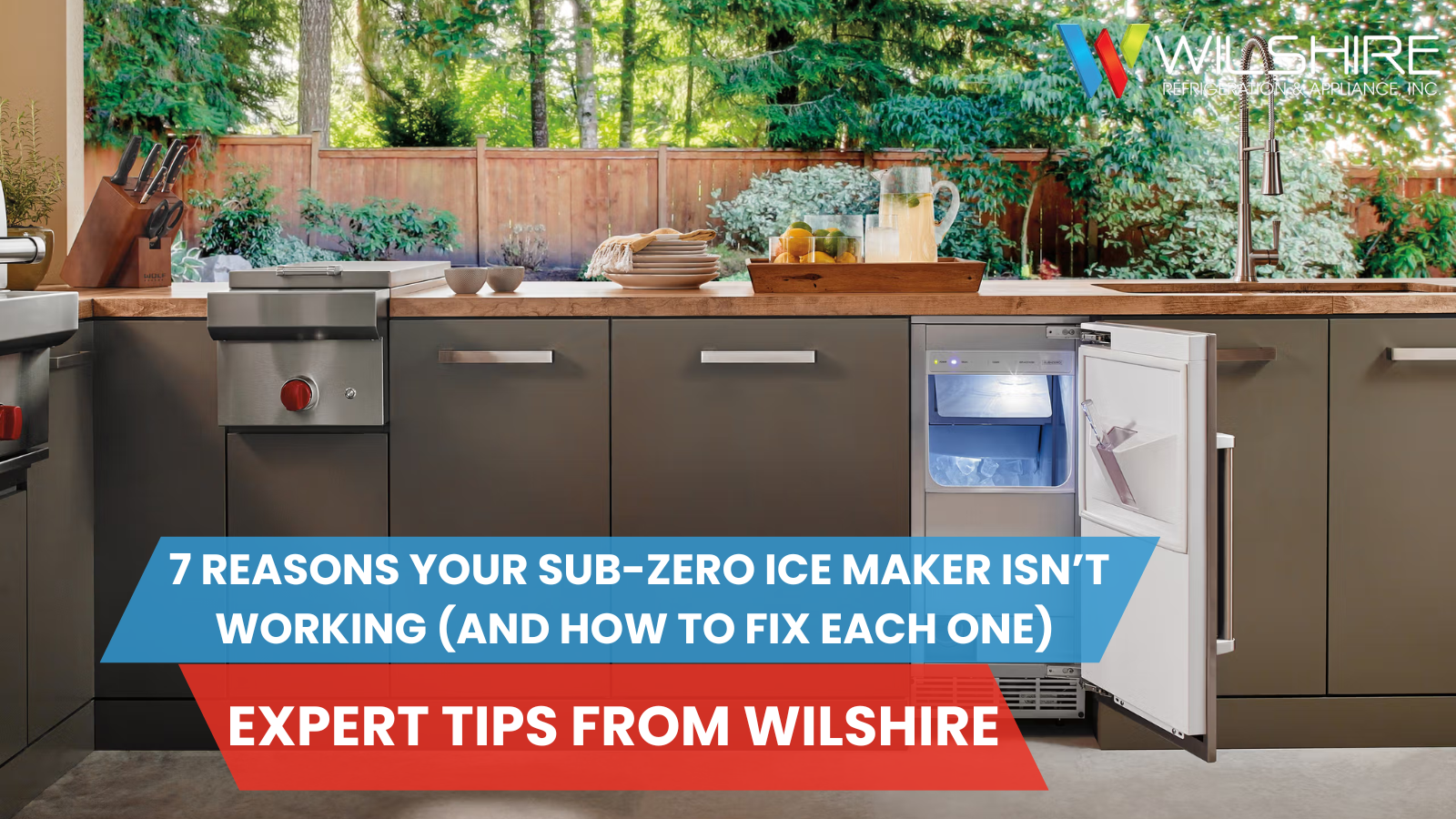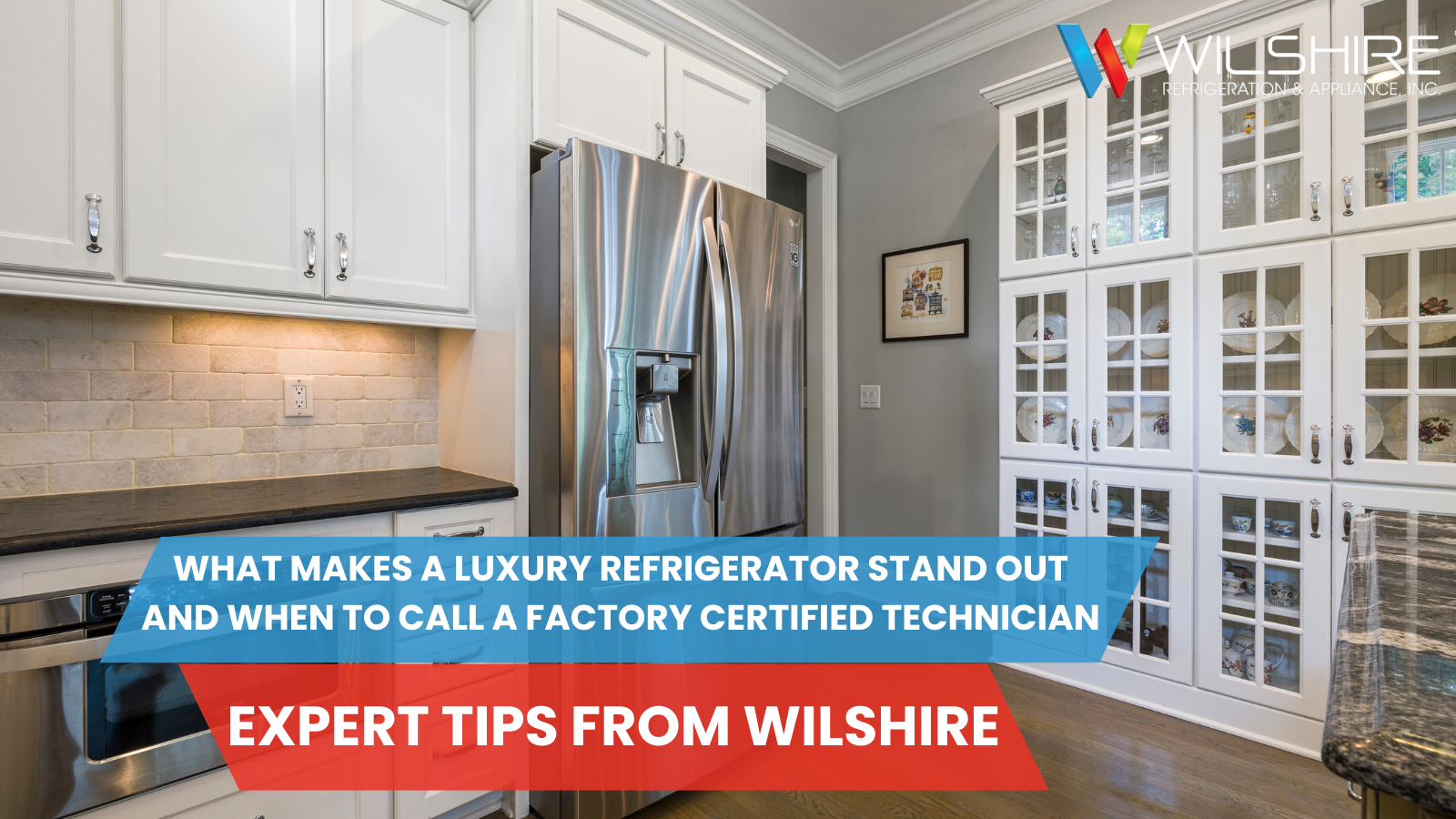Is your refrigerator struggling to keep your food cool? A refrigerator not cooling enough can be a frustrating and potentially costly problem. This common appliance issue can lead to food spoilage and energy inefficiency. In this blog post, we’ll explore the common causes of this problem and offer practical solutions and tips to help you get your refrigerator back to its optimal performance.
Common Causes of Refrigerator Not Cooling Enough
Before diving into the solutions, let’s understand the primary reasons why your refrigerator not getting cold enough:
- Faulty Thermostat: The thermostat is responsible for regulating the temperature inside the refrigerator. If it’s malfunctioning or set incorrectly, it can lead to inadequate cooling.
- Blocked Air Vents: Air vents play a crucial role in circulating cool air throughout the refrigerator. If they become obstructed by dust, debris, or food spills, it can hinder the cooling process.
- Refrigerant Leak: Refrigerant is a vital component that absorbs heat from inside the refrigerator and expels it outside. If there’s a leak in the refrigerant system, it can significantly impact the cooling efficiency.
- Overloading: Stuffing the refrigerator with too many items can restrict airflow and prevent the cool air from reaching all corners of the appliance.
- Faulty Door Seal: A damaged or worn-out door seal can allow warm air to enter the refrigerator, compromising its cooling capabilities.
Solutions to Refrigerator Not Cooling Enough
Now that we’ve identified the potential causes, let’s explore some practical solutions to address the problem:
1. Check the Thermostat Settings
- Locate the thermostat: It’s typically a dial or digital display located inside the refrigerator, often near the top or bottom.
- Ensure it’s set to the desired temperature: The ideal temperature for a refrigerator is between 33°F and 38°F (0.5°C to 3°C). If it’s set too high, the refrigerator won’t cool effectively.
- Check for accuracy: Use a thermometer to verify that the temperature inside the refrigerator matches the thermostat setting. If there’s a significant discrepancy, the thermostat might be faulty and need replacement.
2. Inspect and Clean Air Vents
- Locate the air vents: They are typically found on the back or sides of the refrigerator.
- Remove any obstructions: Clear away dust, debris, or food spills that might be blocking the vents. This can hinder airflow and prevent the cool air from circulating properly.
- Vacuum the vents: Use a vacuum cleaner with a crevice tool to remove stubborn dirt. Regular cleaning will help maintain optimal airflow.
3. Check for Refrigerant Leaks
- Look for signs of a leak: This can include frost buildup, warm spots, or unusual noises. If you notice any of these symptoms, it’s a strong indication of a refrigerant leak.
- Contact a professional: Refrigerant leaks are dangerous and require professional attention. A technician can diagnose the leak, repair it, and recharge the refrigerant system.
- Prevent future leaks: Avoid excessive door openings and maintain proper maintenance to minimize the risk of refrigerant leaks.
4. Inspect the Door Seal
- Check for damage: Look for cracks, tears, or gaps in the door seal. A damaged seal can allow warm air to enter the refrigerator, reducing its cooling efficiency.
- Replace if necessary: If the seal is damaged, it needs to be replaced to ensure proper insulation.
- Clean the seal: Regularly clean the door seal to remove dirt and debris that can interfere with its effectiveness.
5. Consider the Refrigerator’s Age and Condition
- Evaluate the refrigerator’s age: Older refrigerators may have components that are nearing the end of their lifespan.
- Assess the overall condition: If the refrigerator has experienced significant wear and tear, it might be more prone to cooling issues.
- Consider replacement: In some cases, it might be more cost-effective to replace an old or damaged refrigerator rather than invest in expensive repairs.
Tips for Maintaining Refrigerator Cooling
In addition to the solutions mentioned above, here are some tips to help you maintain optimal refrigerator running but not cooling:
1. Avoid Overloading
- Leave space around food items: This allows for better airflow and ensures that the cool air reaches all parts of the refrigerator.
- Store food properly: Organize items to prevent them from blocking air vents or touching each other.
- Avoid storing hot food: Allow hot food to cool down before placing it in the refrigerator to prevent the temperature from rising.
2. Regularly Clean the Refrigerator Interior
- Wipe down shelves and drawers: Remove spills and crumbs to prevent odor and bacteria growth.
- Clean the gaskets: Use a mild soapy solution to clean the door gaskets and ensure a tight seal.
- Avoid harsh chemicals: Opt for natural cleaning agents to prevent damage to the refrigerator’s interior.
3. Maintain Proper Door Sealing
- Inspect the door seal: Check for any cracks, tears, or gaps.
- Replace if necessary: If the seal is damaged, it needs to be replaced to prevent warm air from entering.
- Use door seal gaskets: These can help improve the seal and enhance cooling efficiency.
4. Consider the Refrigerator’s Location
- Avoid direct sunlight: Place the refrigerator in a location away from direct sunlight, as this can cause the temperature inside to rise.
- Ensure proper ventilation: Make sure there’s adequate space around the refrigerator for proper airflow.
5. Schedule Regular Maintenance
- Have the refrigerator serviced: Schedule regular maintenance checks to identify and address potential issues before they become major problems.
- Clean the condenser coils: The condenser coils are located on the back or underside of the refrigerator. Cleaning them regularly can improve cooling efficiency.
Call Wilshire Refrigeration & Appliance for Factory-Certified Repairs
Wilshire Refrigeration & Appliance is your trusted partner for all your Sub-Zero refrigerator needs. With their expertise and commitment to quality, you can rest assured that your Sub-Zero appliance will be in excellent hands.
If you’re experiencing issues with your Sub-Zero refrigerator, don’t hesitate to contact Wilshire Refrigeration & Appliance. Their expertise and dedication will ensure that your appliance is restored to its optimal condition.
Final Thoughts
By following the solutions and tips outlined in this blog, you can effectively address the problem of your refrigerator not cooling enough. Regular maintenance and attention to detail will help prevent future issues and ensure that your refrigerator operates efficiently for years to come. If you encounter persistent problems or suspect a major issue, it’s always advisable to consult a professional appliance repair service.


